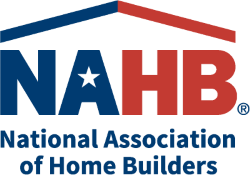NAHB: Rent Caps Would Exacerbate Housing Affordability Crisis

Over the past two weeks, President Biden has raised the issue of rent caps on three separate occasions.
NAHB is strongly opposed to rent caps and believes it would exacerbate the housing affordability crisis by discouraging new production, which will ultimately lead to higher rents. Capping rents would also lead to reduced maintenance and hurt existing tenants because owners and developers will be unable to cover rising costs if rents are fixed.
Research has proven repeatedly that mandatory rent control is a failed policy that does nothing to alleviate the root causes of housing affordability issues — namely the fact that our nation’s housing supply has not kept pace with the needs of our growing population. Rent “stabilization” disincentivizes rental multifamily housing investments across markets, particularly in low-income communities that already often have few affordable options.
Moreover, rent regulation is not equitable, as it does not target lower- and moderate-income renters that are in most need of assistance, support and stability. Instead, it incentivizes current renters to remain in place for longer periods of time and disincentivizes additional investments in housing, thereby limiting opportunities for others who do not have access to the rental housing market in favor of those that already do.
Engaging in this type of heavy-handed government policy as proposed by President Biden would create more housing scarcity and penalize a large and increasing number of would-be renters as the rental housing supply is suppressed or shrinks.
Among 49.5 million rental housing units in the United States, nearly 46% of them are small rental properties of 1-4 units, according to the National Association of Realtors. Over 70% of the small rental properties (1-4 units) are owned by individuals, and about 70% are managed by the same owners, defined as mom-and-pop landlords.
The reality is that these mom-and-pop landlords also operate under extremely tight margins and are responsible for paying their mortgage, property taxes, employees and cleaning/maintenance services. Federal intervention to freeze or cut rents would mean that these landlords would be unable to provide the necessary upkeep and maintenance to their apartment units, which would harm their tenants.
Better Solutions
An anti-competitive, anti-business edict from the president is certainly not the answer to resolve this complex issue. The White House and other policymakers should be looking for ways to reduce costly regulations and add incentives for developers to produce more housing, especially affordable and workforce housing.
NAHB has developed a 10-point plan to tackle the housing affordability crisis that gets at the root of the problem — removing barriers that hinder the construction of new homes and apartments.
At the federal level, the Biden administration should be calling on the Senate to approve the Tax Relief for American Workers Act, legislation that sailed through the House earlier this year and includes key provisions to expand and strengthen the Low-Income Housing Tax Credit (LIHTC). The LIHTC is the best tool to finance the production of affordable rental housing, but demand for this housing greatly exceeds available resources. The administration should also be urging Congress to support bipartisan proposals to create a new tax credit to produce affordable workforce rental housing geared toward middle-income households, such as teachers, health care professionals and law enforcement.
The administration should also overturn a recent mandate on the use of restrictive, costly energy codes that raise housing costs and provide little energy savings to consumers. The U.S. Department of Housing and Urban Development and the U.S. Department of Agriculture recently finalized a decision that requires them to insure mortgages for new single-family homes only if they are built to the 2021 International Energy Conservation Code (IECC) and HUD-financed multifamily housing be built to 2021 IECC or ASHRAE 90.1-2019.
The federal requirements for the 2021 IECC are in direct conflict with energy codes in most jurisdictions around the country. This will lead to a host of logistical and implementation issues in the field. The end result will be longer permitting and construction times and lower housing production at a time when a lack of affordable housing in the single-family and multifamily markets is the main factor driving the housing affordability crisis.
To increase housing supply and reduce affordability burdens, state and local governments can start by allowing for zoning to include more high-density housing, reducing regulations that stall building projects, encouraging public/private partnerships in development, and offering direct help to those that need it.
Implementing these practical solutions will boost multifamily housing production and make renting more affordable.
Contact:
Elizabeth Thompson – ethompson@nahb.org – (202) 266-8495
Source: National Association of Home Builders

